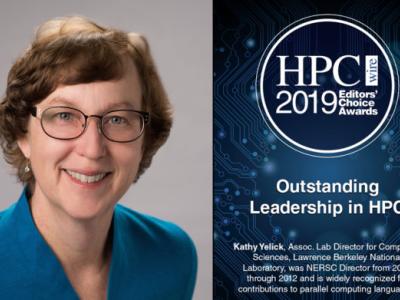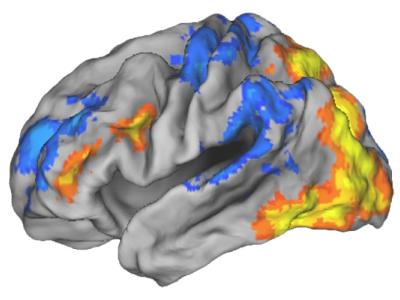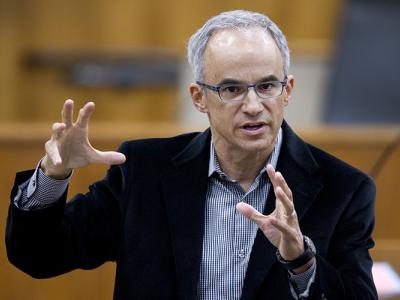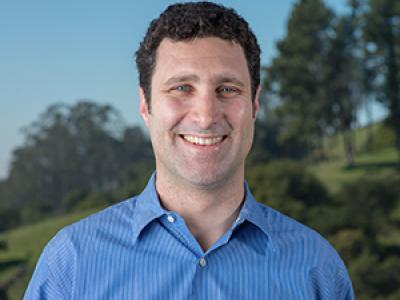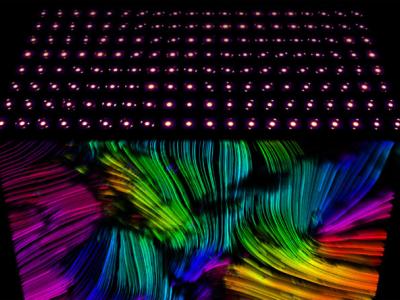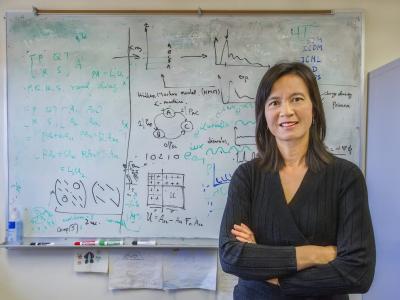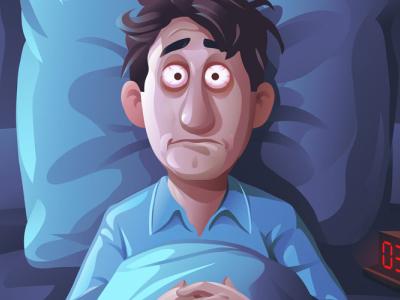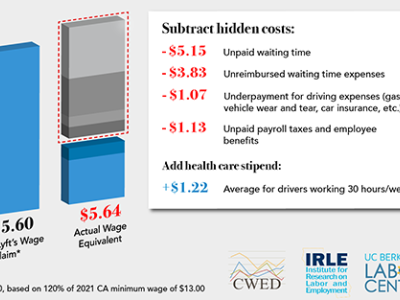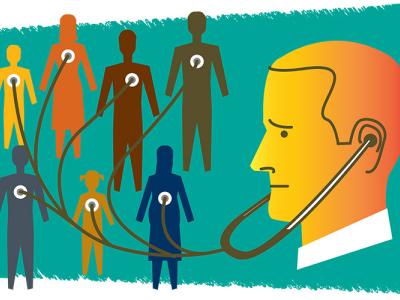Teen girls in South Africa face an extraordinary threat of HIV: By the time they reach adulthood, one in four South African girls will have contracted the virus, and most are first infected during adolescence. Experiencing depression puts these girls at even higher risk of HIV infection, reveals analyses led by researchers at the University of California, Berkeley, and based on a longitudinal study led by colleagues at the University of North Carolina and the University of the Witwatersrand, South Africa.
Research News
Learn more about UC Berkeley's researchers and innovators.
Showing 1457 - 1472 of 3461 Results
Katherine Yelick, the associate laboratory director for Computing Sciences at the U.S. Department of Energy’s Lawrence Berkeley National Laboratory (Berkeley Lab) and professor of electrical engineering and computer sciences at UC Berkeley, has been honored by HPCwire as their Editor’s Choice for Outstanding Leadership in HPC.
In a new commentary published in Nature, three UC Berkeley researchers and their coauthors argue that without considerable government investment in four areas—family planning, girls’ education, agriculture, and security—Western Sahel countries’ political and economic systems could collapse. In a region with widespread hunger and malnutrition, rising food and economic insecurity could pave the way for famines, mass migration, and violent conflict. Only by investing heavily in forward-looking programs, the researchers argue, can governments avert serious disruptions down the line.
With a $106 million gift from the Weill Family Foundation, UC Berkeley (Berkeley), UC San Francisco (UCSF) and the University of Washington (the UW) have launched the Weill Neurohub, an innovative research network that will forge and nurture new collaborations between neuroscientists and researchers working in an array of other disciplines—including engineering, computer science, physics, chemistry, and mathematics—to speed the development of new therapies for diseases and disorders that affect the brain and nervous system.
In this Oct. 11 talk, Berkeley Law professor Ian Haney López, one of the nation’s leading thinkers on how racism has evolved in the U.S. since the civil rights era, discusses his new book, Merge Left: Fusing Race and Class, Winning Elections and Saving America, offering insight and hopeful new strategy for defeating the right’s racial fearmongering and achieving bold progressive goals.
A pioneering scholar in the study of violent crime for half a century, Berkeley Law Professor Franklin Zimring has won the Stockholm Prize in Criminology, the field’s top international honor.
Researchers use electron microscopy to produce high-resolution images at the atomic scale of everything from composite nanomaterials to single proteins. The technology provides invaluable information on the texture, chemistry, and structure of these materials. Research over the past few decades has focused on achieving higher resolutions: being able to image materials at progressively finer levels with more sensitivity and contrast. But what does the future hold for electron microscopy?
We can directly see the hidden world of atoms thanks to electron microscopes, first developed in the 1930s. Today, electron microscopes, which use beams of electrons to illuminate and magnify a sample, have become even more sophisticated, allowing scientists to take real-world snapshots of materials with a resolution of less than half the diameter of a hydrogen atom. Now, scientists at the Department of Energy’s Lawrence Berkeley National Laboratory (Berkeley Lab) are pushing the boundaries of electron microscopy even further through a powerful technique called 4D-STEM, a term that stands for “2D raster of 2D diffraction patterns using scanning transmission electron microscopy.”
Urban traffic roughly follows a periodic pattern associated with the typical “9 to 5” work schedule. However, when an accident happens, traffic patterns are disrupted. Designing accurate traffic flow models, for use during accidents, is a major challenge for traffic engineers, who must adapt to unforeseen traffic scenarios in real time.
When it comes to managing anxiety disorders, William Shakespeare’s Macbeth had it right when he referred to sleep as the “balm of hurt minds.” While a full night of slumber stabilizes emotions, a sleepless night can trigger up to a 30% rise in anxiety levels, according to new research from UC Berkeley.
Uber, Lyft, and DoorDash have unveiled their ballot initiative to undo historic worker protections enshrined in AB5, California’s new law that tightens the criteria for worker classification. The initiative claims drivers will receive a guaranteed pay equal to 120% of the minimum wage (that would be $15.60 in 2021, when the California minimum wage will be $13). However, the Labor Center's review of the initiative leads to a very different estimate.
With a multi-faith population of some 1.3 billion, India claims to be the world’s largest secular democracy. But when it comes to the question of who is a true Indian, the country’s Hindu children are more likely than their Muslim peers to connect their faith to their national identity, according to new research from UC Berkeley.
Researchers at the University of California, Berkeley, have identified biomarkers — genes and specific brain circuits in mice — associated with a common symptom of depression: lack of motivation. The finding could guide research to find new ways to diagnose and potentially treat individuals suffering from lack of motivation and bring closer the day of precision medicine for psychiatric disorders like depression.
In her new book, They Were Her Property: White Women as Slave Owners in the American South, Stephanie E. Jones-Rogers, UC Berkeley associate professor of history, expands our understanding of American slavery and the 19th century slave market with an investigation into the role of white women in the slave economy. She found they were active participants, profited from it and were as brutal as men in their management techniques.
From predicting who will be a repeat offender to who’s the best candidate for a job, computer algorithms are now making complex decisions in lieu of humans. But increasingly, many of these algorithms are being found to replicate the same racial, socioeconomic or gender-based biases they were built to overcome.
For the fifth straight year, UC Berkeley tops the list of public universities in global rankings by U.S. News & World Report. And, for the third year in a row, the campus ranks fourth-best overall among publics and privates. U.S. News’ 2020 rankings evaluated 1,500 universities across 81 countries based on published academic research and reputation, among other criteria.


